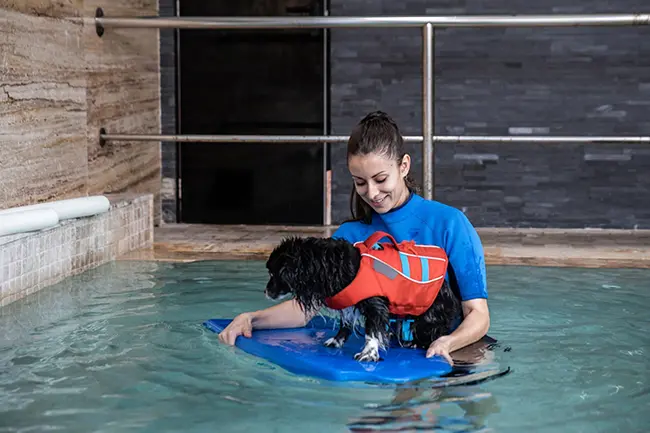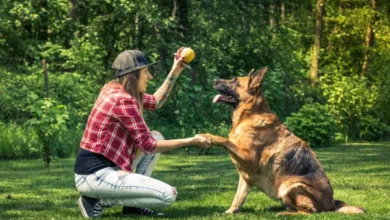
Bringing a new furry friend into your life is an exciting journey, but it comes with its fair share of challenges. One of the most important aspects of ensuring a harmonious relationship with your canine companion is proper training. A well-trained dog is not only a joy to be around but also a responsible member of the community. However, choosing the right trainer for your dog can be a daunting task. With a multitude of options available, each claiming to be the best, how do you make the right choice? By following these easy steps, you can set both you and your furry friend up for a successful training journey.
Assess Your Dog’s Needs
Every dog is unique, and their training needs can vary significantly based on factors such as breed, age, temperament, and existing behaviors. Before embarking on your search for a reputable dog training facility, take the time to assess your dog’s specific needs. Do they need basic obedience training, help with specific behavioral issues, or perhaps specialized training for activities like agility or therapy work? Understanding your dog’s requirements will help you narrow down the type of trainer who can best cater to those needs.
Research Training Methods
Trainers employ a wide range of training methods, from positive reinforcement and clicker training to more traditional methods. It’s essential to research and understand these methods to ensure they align with your beliefs and the way you want to train your dog. Positive reinforcement methods, which focus on rewarding desired behaviors rather than punishing unwanted ones, are generally recommended for their effectiveness and ethical considerations.
Positive Reinforcement Training
Positive reinforcement training is a method that centers around rewarding your dog’s desired behaviors with treats, praise, or toys. This approach focuses on encouraging your dog to repeat behaviors that result in positive outcomes. For example, if you’re teaching your dog to sit, you would reward them with a treat when they successfully sit on command.
Clicker Training
Clicker training is a subset of positive reinforcement training that uses a distinct sound, often a clicker, to mark the exact moment your dog performs a desired behavior. The click is followed by a reward, such as a treat. The click serves as a clear and precise communication tool, helping your dog understand which action led to the treat. Over time, your dog associates the click with positive outcomes, making the learning process more efficient.
Negative Reinforcement Training
Negative reinforcement training involves removing or avoiding an unpleasant stimulus when your dog exhibits the desired behavior. It’s essential to note that negative reinforcement is not the same as punishment. An example of negative reinforcement is gently pulling up on the leash when teaching your dog to walk on a loose leash. Once your dog follows the behavior (walking without pulling), the pressure on the leash is relieved, reinforcing the desired action.
Traditional or Compulsion Training
Traditional training methods, also known as compulsion training, focus on correcting undesirable behaviors through correctional tools like choke chains or prong collars. These methods rely on aversive techniques, which involve applying discomfort or mild pain to discourage unwanted behaviors.
Check Qualifications and Experience
When entrusting your dog’s training to someone, it’s crucial to ensure that the trainer is qualified and experienced. Look for trainers who are certified by reputable organizations like the International Association of Canine Professionals (IACP) or the Association of Professional Dog Trainers (APDT). Additionally, inquire about their experience working with dogs of similar breeds or behavioral issues. A well-rounded and experienced trainer is more likely to understand your dog’s needs and provide effective training.
Meet and Ask Questions
Before making a final decision, schedule a meeting with potential trainers. This gives you the opportunity to observe how they interact with your dog and get a sense of their training style. Prepare a list of questions to ask, such as their approach to handling challenging behaviors, the typical duration of training programs, and what kind of involvement they expect from you as the dog owner. A knowledgeable and patient trainer will be open to answering your questions and addressing your concerns.
Observe Training Sessions
While discussions and interviews are informative, observing an actual training session can provide valuable insights into the trainer’s techniques and your dog’s reactions. Many trainers offer the option to sit in on a training session or attend a group class. This firsthand experience allows you to see how the trainer interacts with dogs and how well your dog responds to their instructions. Pay attention to the trainer’s patience, clarity of instructions, and ability to maintain a positive and controlled environment. Observing a session can help you determine whether the trainer’s methods align with your goals and whether they create a comfortable and safe learning environment for your dog.
Look for Customization and Personalization
A crucial aspect of successful dog training is the trainer’s ability to tailor their approach to your dog’s individual personality and learning style. Every dog is unique, and what works for one may not work for another. When evaluating potential trainers, inquire about their approach to customization and personalization. A skilled trainer will assess your dog’s behavior, temperament, and learning pace to create a training plan that caters specifically to your dog. This level of customization can lead to more effective and efficient results, as your dog will respond better to a training program that is designed with their specific needs in mind.
Seek Reviews and Recommendations
Take advantage of online platforms, social media, and local community groups to gather feedback from previous clients of the trainers you’re considering. Positive reviews and recommendations can offer valuable insights into the trainer’s effectiveness, professionalism, and rapport with dogs and their owners. Be sure to consider both positive and constructive reviews to gain a well-rounded perspective. Additionally, don’t hesitate to seek recommendations from friends, family, or local veterinarians who may have firsthand experience with reputable trainers.
Choosing the perfect trainer for your dog is a significant decision that can have a lasting impact on your dog’s behavior and your relationship with them. By assessing your dog’s needs, researching training methods, checking qualifications, meeting potential trainers, looking for customization, observing training sessions, and seeking reviews, you’re equipping yourself with a comprehensive approach to making the right choice. Remember that the journey of dog training is a collaborative effort between you, your dog, and the trainer.



